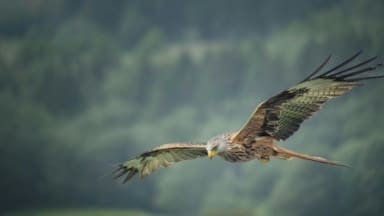
A partnership project organised by British Trust for Ornithology (BTO), the Joint Nature Conservation Committee (JNCC) and the Royal Society for the Protection of Birds (RSPB), the Breeding Bird Survey (BBS) is one of the UK’s longest-running citizen science initiatives. The BBS documents the population trends of widespread UK breeding bird species during the periods 1994–2023 and 1998–2023 respectively, producing population trends for 119 species.
According to the 29th annual BBS report, birds such as Goldfinch, Great Spotted Woodpecker and Nuthatch are doing reasonably well, but others including Swift and Curlew are in steep decline. Other species are faring differently in different parts of the UK; Tree Sparrow and Willow Warbler are both doing well in Scotland but not in England. The reasons for these population changes are varied and the survey data allow scientists to investigate the potential drivers of change for each species. In all, the information from the BBS helps to set bird conservation priorities in the UK, including Red-Listing, contributing to Indicators, and measuring nature recovery.
Since the start of BBS, the data have shown that Swifts across the UK have suffered significant declines of up to 66% since 1995. For every ten Swifts that you may have seen screaming overhead thirty years ago, today you will only see four. Swallow numbers have dropped by almost a half in the last ten years.
For birds such as these, that rely heavily on aerial insects, any decline in these invertebrates means that there is simply less food for adult birds and their growing chicks. A reduction of breeding sites can be mitigated by the provision of artificial nesting sites, but the issue of diminishing food resources is much more difficult to resolve. These birds are not alone; of the 119 species monitored by BBS in the UK, 42 have decreased since 1995, while 35 have increased.
The species with the greatest decline is Turtle Dove, which has seen its numbers plummet by a staggering 97% and is now so rare that BBS cannot monitor it effectively, although the current hunting moratorium in Western Europe is giving cause for optimism that efforts to improve breeding habitats in England will support recovery. Other farmland birds, like Grey Partridge (decline of 62% since BBS began), Yellowhammer (31%), Lapwing (51%) and Curlew (50%) are in a similar predicament, although well-evidenced and well targeted agri-environment measures can play a critical role in stemming the declines of these and other farmland species.
Several species are increasing and expanding their range. Red Kites represent a major conservation success story of recent years and numbers have increased by 2232% since the start of the BBS. Little Egret, a relatively recent colonist, is the species with the greatest increase as numbers grew by 2347% during the same time period. A fifth of the species showing increases are non-native birds such as Ring-necked Parakeet and Egyptian Goose.
Dr Paul Woodcock, Joint Nature Conservation Committee, said: “Long-standing monitoring schemes, such as the Breeding Bird Survey, are critical to better understand the status of our natural environment and the pressures faced by our wildlife. Thanks to the collaborative effort of thousands of volunteers we have an invaluable dataset that informs policy, targets conservation action and evaluates success, as evidenced by the Red Kite recovery and by our understanding of which species are experiencing large declines.”

